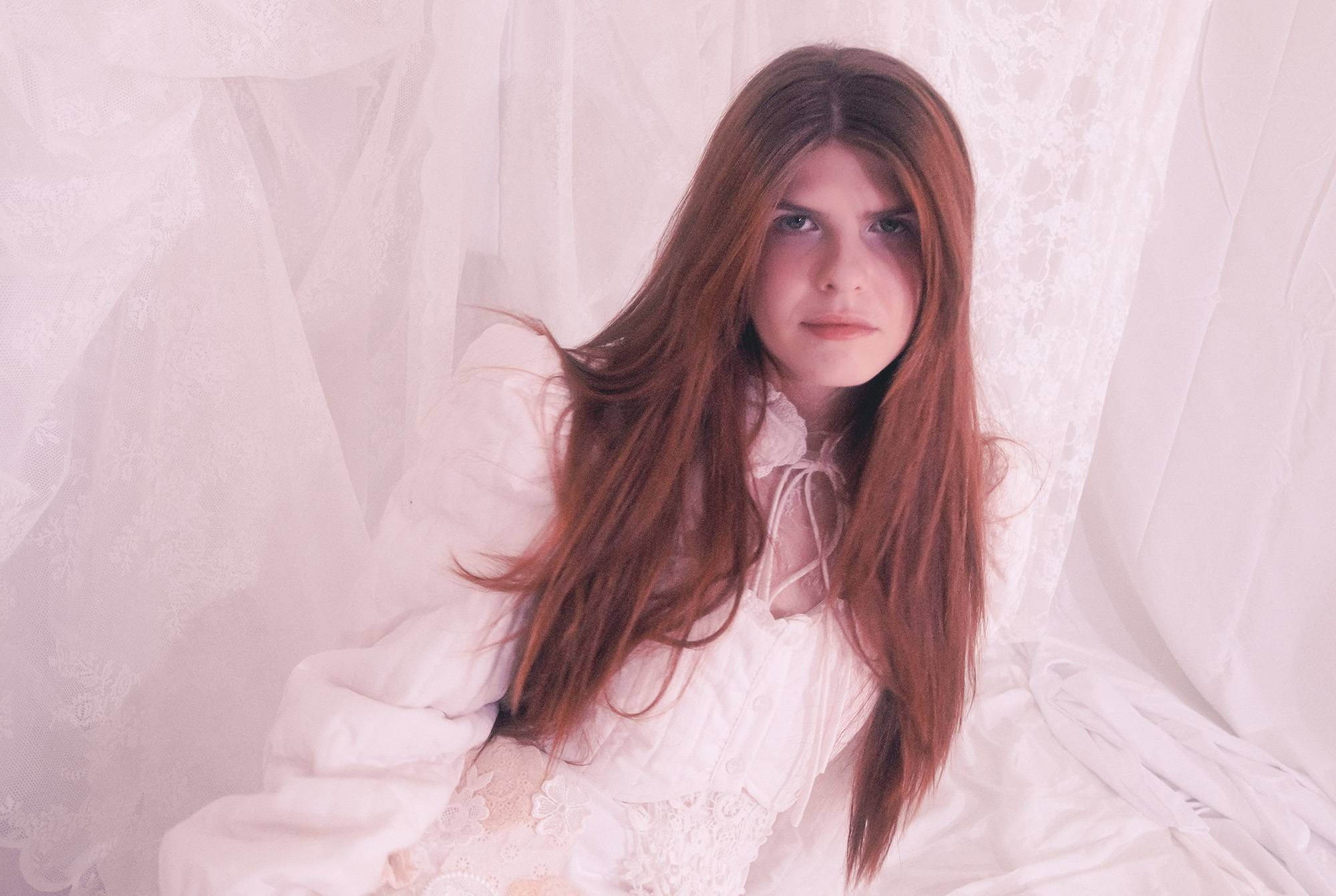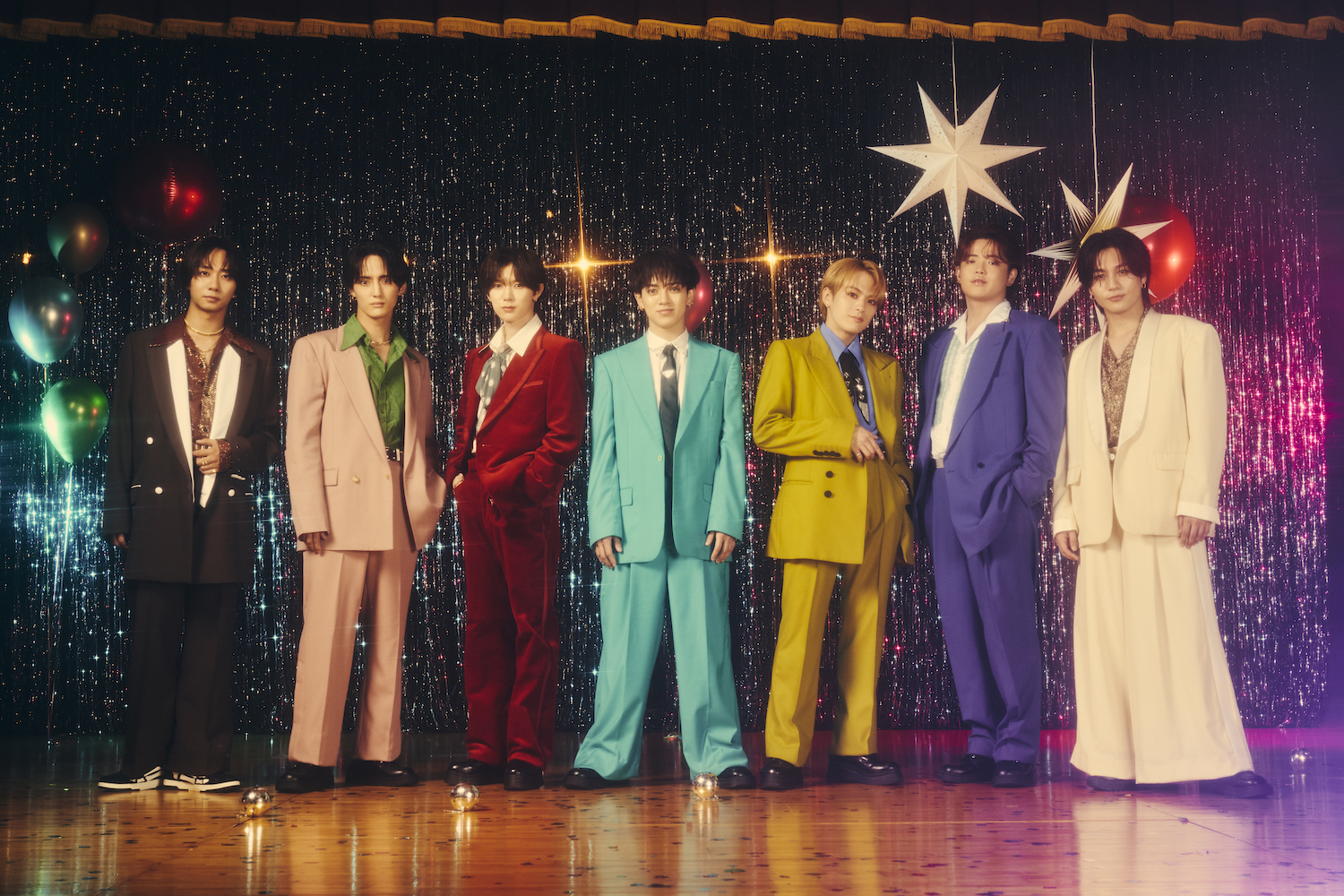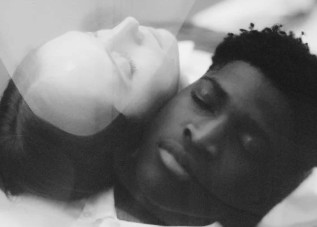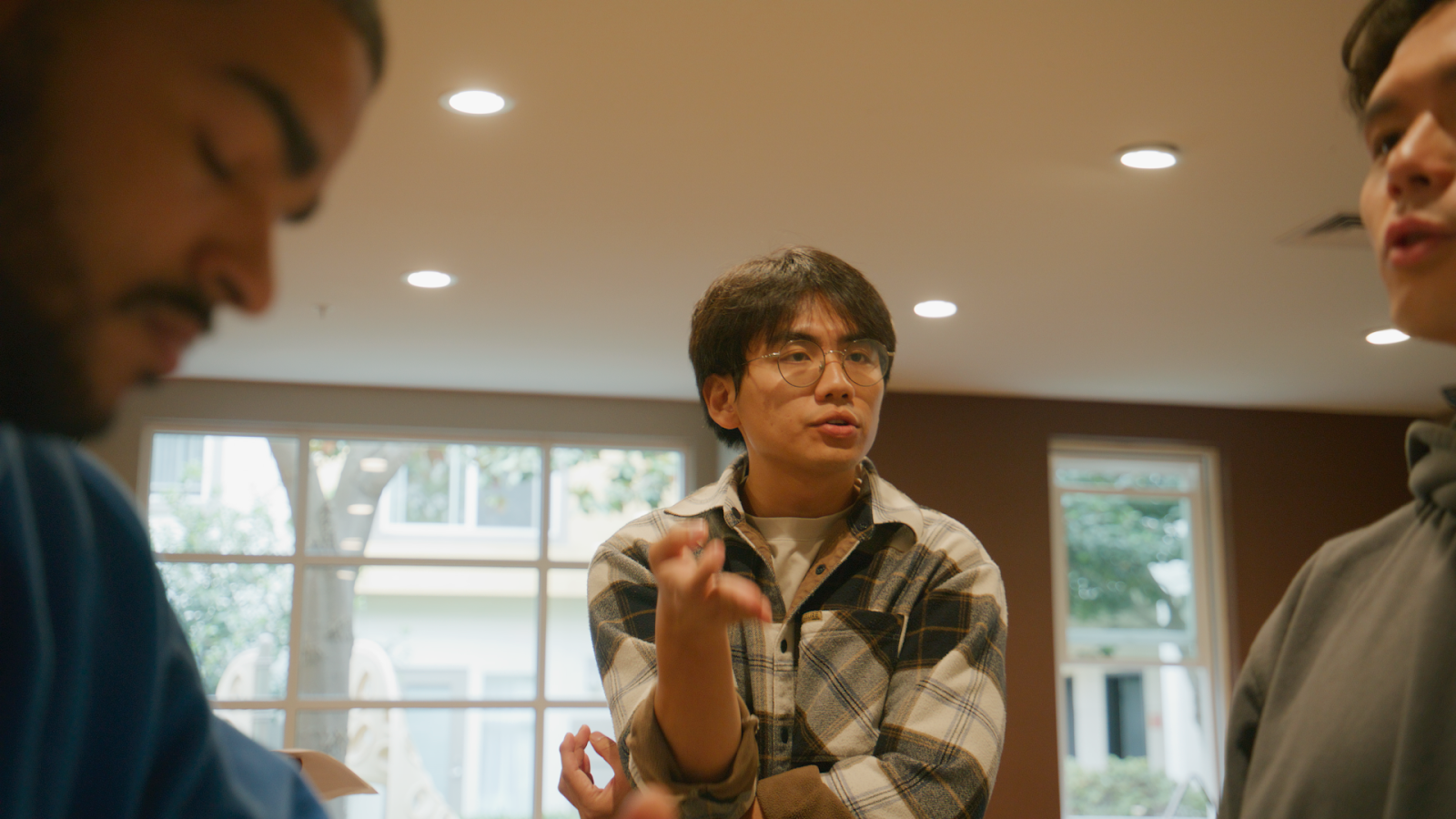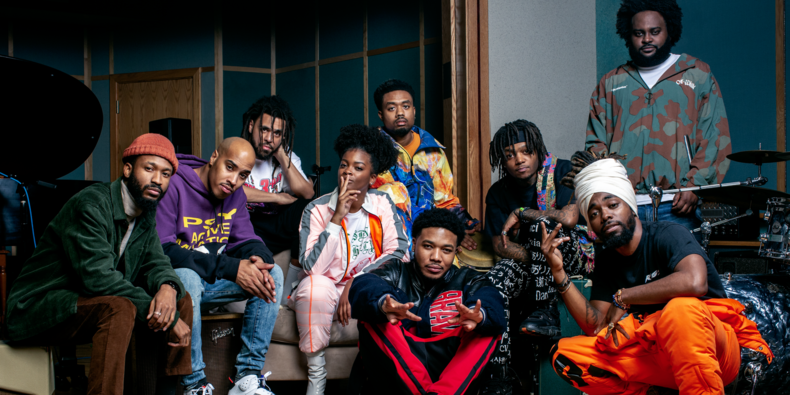
343 elite hip-hop artists were invited to appear at Tree Sound Studios in Atlanta, Georgia for 10 days of nonstop music-making. 142 songs were recorded in that time, 257.65 GB of music.
This is what the Revenge of the Dreamers III sessions looked like: one-part chaos, two-parts competition, and a whole lot of creative fun—at least according to the project’s coinciding documentary. During this 10-day marathon, there were 12 separate studio setups for artists and producers to wander in and out. Each recording space functioned as its own unique and constantly shifting world. With so many talented individuals roaming the halls and feeding off whatever energies pulled them in, everybody felt an unspoken pressure to step their game up, vying not only for artistic space in a packed recording session, but also inrying to write something dope enough to make the album’s final cut. This pressure appeared to stoke, rather than stifle, creativity.
“It’s a frenzy,” Dreamville artist Omen said in the documentary, addressing the sessions’ vibe of healthy competition. “First of all, you gotta find your room, your spot, where you’re gonna set up—whether that’s writing, making a beat—because it’s so many people coming through, and them spots get snatched up…And it’s studios all around here, but, I mean, within probably 30 minutes, they might be all taken.”
Once the creative frenzy finally came to an end, 18 songs were chosen out of the 142 recorded to appear on the final cut of Revenge of the Dreamers III. The end result featured 34 artists and 27 producers. Of those 18 songs, not a single one flopped or felt like filler, but this should come as no surprise. When you start with such a massive mountain of music inspired by such a uniquely dynamic and collaborative process, success is almost inevitable.
In addition to Dreamville co-founder and veteran emcee, J. Cole, ROTD III also showcases the breadth of the label’s eclectic and talented roster: J.I.D., Bas, Omen, Cozz, Lute, Ari Lennox, EARTHGANG, and in-house producer, Elite. Since the album is a Dreamville Records compilation, these artists are the glue that holds everything together, offering a sort of stylistic motif in a crowded list of features that would otherwise risk sounding chaotic and without direction.
ROTD III also features Reason (of Kendrick Lamar’s Top Dawg Entertainment fame), Young Nudy, T.I., Ski Mask the Slump God, Smokepurpp, Smino, Ty Dolla $ign, Saba, and Vince Staples (to name a few). So, this album is star-studded as a summer blockbuster, but what really stands out about this impressive guest list are the creative opportunities born from putting all these artists in one building for days on end—we get collaborations and truly fun moments that, had this album been recorded more traditionally, may have never been possible.
One such standout moment comes in the form of J.I.D. teaming up with T.I. for one of only two duets on the record (the other comes in the form of J. Cole with Young Nudy). Their track, “Ladies, Ladies, Ladies” is a buoyant spin on the Jay-Z classic, “Girls, Girls, Girls,” in which J.I.D. runs through a list of the diverse range of women he’s been with and the unique issues each one presented him. Then T.I. takes the second verse, prefacing it by playfully nodding to how much longer he’s been around: “Young n—-, you don’t know nothing ’bout no bitches. Listen…” The track is a collaboration that we never knew we needed, and the two emcees bridge this generational divide smoothly.
Another powerful collaboration comes in the form of Reason and Cozz at the end of “LamboTruck,” as they plot to rob their respective label-heads. Reason throws the idea out, rhyming, “Cozz, look, I done been broke too long / n—-, bills too long, can’t hide that, n—- / Cole just pulled up in a Lamborghini truck / On the homies and God, we should rob that n—-.” After Cozz takes issue with the plan, citing his allegiance to Cole, Reason offers another solution to the problem: “Look, let’s make a deal / While I go and rob Cole, you go rob Top / Cool,” Cozz agrees. This back and forth is the rare collaborative fire that ROTD III opens itself up to in its unprecedented approach to making a mixtape.
At the heart of this album is something that is at the heart of hip-hop itself: an element of fun and mutually beneficial competition for the greater good. The recording sessions at Sound Tree functioned as a microcosm of what it’s like to try and make it in rap—throwing hundreds of talented people together into a shared space, all of them vying for their chance to shine. In the end, everyone grows creatively by their desire to surpass the bar set by their peers and predecessors. The whole of the culture is pushed forward every time one artist takes a step toward greatness. And in mirroring this, ROTD III translates into one of the most organic, enjoyable, and authentic hip-hop albums of the decade.
- J. Cole’s ‘Revenge of the Dreamers III’ Has Arrived ›
- J. Cole And Dreamville Drop ‘Revenge Of The Dreamers III’ – Stream … ›
- Dreamville – Revenge Of The Dreamers III (Album Review) – The … ›
- Album Review | Dreamville Records – Revenge Of The Dreamers II … ›
- Dreamville – Revenge of the Dreamers III – Reviews – Album of The … ›
- Stream Dreamville’s Super-Compilation ‘Revenge Of The Dreamers III’ ›
- Various Artists: Dreamville II: Revenge of the Dreamers Album … ›
- Dreamville ‘Revenge of The Dreamers III’ Album Review – DJBooth ›








